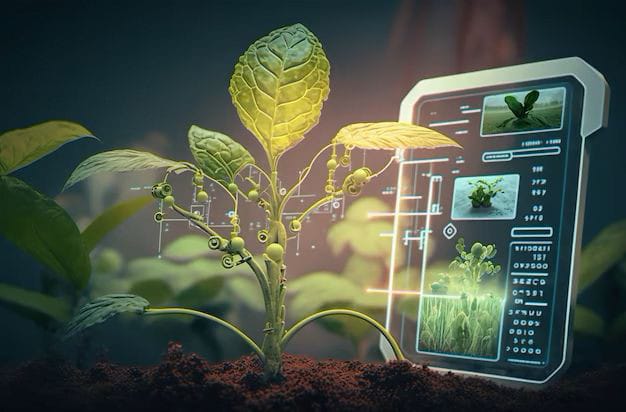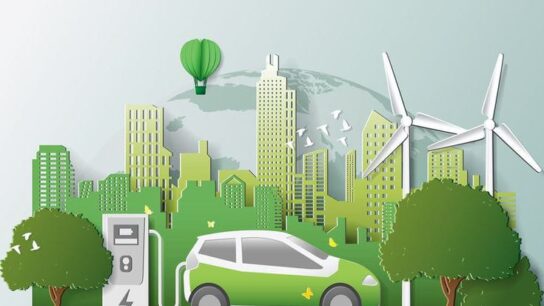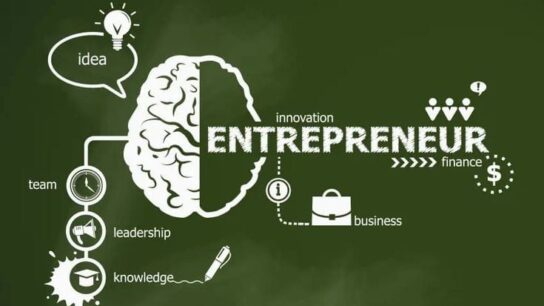Revolutionizing Agriculture: Exploring High-Tech Advancements in Farming !!!
In recent years, the agricultural industry has undergone a remarkable transformation driven by technological innovation. From precision farming and automation to the integration of artificial intelligence and robotics, high-tech advancements are revolutionizing the way we cultivate crops, raise livestock, and manage agricultural operations. In this comprehensive exploration, we delve into the cutting-edge technologies shaping the future of farming and their profound implications for food production, sustainability, and global food security.
Precision Farming: Enhancing Efficiency and Sustainability
Precision farming, also known as precision agriculture, leverages technology to optimize the management of agricultural resources, such as water, fertilizers, and pesticides, based on site-specific conditions and real-time data. Key technologies driving precision farming include:
- Global Positioning System (GPS) and Geographic Information Systems (GIS): GPS technology enables farmers to precisely map fields and track the location of equipment, while GIS technology provides spatial analysis tools for identifying variability within fields and optimizing resource allocation.
- Remote Sensing and Satellite Imagery: Remote sensing technologies, such as drones and satellites, capture high-resolution imagery of agricultural fields, allowing farmers to monitor crop health, detect pests and diseases, and assess soil conditions from above.
- Variable Rate Technology (VRT): VRT systems enable the precise application of inputs, such as fertilizers, pesticides, and irrigation water, based on spatial variability within fields, resulting in more efficient resource use and improved crop yields. Automation and Robotics: Streamlining Agricultural Operations
Automation and robotics are revolutionizing agricultural operations by reducing labor requirements, increasing efficiency, and improving overall productivity. Key advancements in this area include:
- Autonomous Tractors and Machinery: Autonomous vehicles equipped with GPS and sensors can perform tasks such as plowing, seeding, spraying, and harvesting with precision and efficiency, freeing up farmers to focus on other aspects of farm management.
- Robotic Harvesting Systems: Robotic systems equipped with computer vision and machine learning algorithms can identify ripe fruits and vegetables, selectively harvest crops, and sort produce based on size, color, and quality, reducing post-harvest losses and improving food quality.
- Drone Technology: Drones equipped with cameras and sensors can collect aerial imagery, monitor crop growth, and assess field conditions, providing valuable insights for decision-making and enabling early detection of problems such as pest infestations or crop diseases. Artificial Intelligence and Data Analytics: Optimizing Decision-Making
Artificial intelligence (AI) and data analytics are transforming agriculture by analyzing vast amounts of data to improve decision-making, optimize resource allocation, and enhance productivity. Key applications of AI and data analytics in farming include:
- Predictive Analytics: AI algorithms analyze historical data, weather patterns, soil conditions, and crop health metrics to predict future outcomes, such as crop yields, pest outbreaks, and optimal planting times, helping farmers make informed decisions and mitigate risks.
- Crop Monitoring and Management Systems: AI-powered platforms integrate data from various sources, including satellite imagery, weather stations, and soil sensors, to monitor crop growth, detect anomalies, and recommend agronomic interventions in real time, maximizing yields and reducing input costs.
- Supply Chain Optimization: AI algorithms optimize supply chain logistics by forecasting demand, scheduling transportation, and managing inventory levels, ensuring the timely delivery of agricultural products to markets while minimizing waste and spoilage. Vertical Farming and Indoor Agriculture: Redefining Food Production
Vertical farming and indoor agriculture are revolutionizing food production by growing crops in vertically stacked layers or indoor environments using controlled environmental conditions, artificial lighting, and hydroponic or aeroponic systems. Key advancements in this area include:
- Vertical Farming Towers: Vertical farming systems utilize vertical space to grow crops in stacked layers, often indoors or in urban environments, using LED lighting, nutrient-rich hydroponic solutions, and automated climate control systems to optimize growing conditions and maximize yields.
- Containerized Farming Units: Containerized farming units, such as shipping containers retrofitted with hydroponic or aeroponic systems, enable year-round production of fresh produce in controlled environments, regardless of external weather conditions, making them ideal for urban agriculture and local food production.
- Indoor Vertical Farms: Indoor vertical farms utilize tall buildings or warehouses to grow crops in vertical racks or shelves, using advanced lighting, irrigation, and climate control systems to create optimal growing conditions for a wide range of crops, from leafy greens and herbs to strawberries and tomatoes. Implications for Food Security and Sustainability
The adoption of high-tech advancements in farming has significant implications for global food security, sustainability, and environmental stewardship. By improving productivity, reducing resource inputs, and minimizing environmental impacts, these technologies play a crucial role in meeting the growing demand for food while mitigating the challenges posed by climate change, population growth, and limited arable land.
- Increased Productivity and Efficiency: High-tech farming technologies enable farmers to produce more food with fewer resources, increasing agricultural productivity and efficiency and meeting the nutritional needs of a growing global population.
- Resource Conservation: Precision farming techniques, such as VRT and drip irrigation, minimize the use of water, fertilizers, and pesticides, reducing input costs and environmental pollution while conserving natural resources for future generations.
- Climate Resilience: AI-powered predictive analytics help farmers anticipate and adapt to changing climatic conditions, enabling them to optimize planting decisions, adjust irrigation schedules, and implement adaptive practices to mitigate the impacts of climate change on crop yields and food production.
- Local Food Production: Vertical farming and indoor agriculture enable the production of fresh, nutritious food in urban areas, reducing the carbon footprint associated with food transportation and promoting local food systems that enhance food security and resilience to supply chain disruptions. Challenges and Opportunities
While high-tech advancements hold immense promise for the future of farming, they also present challenges and opportunities that must be addressed to realize their full potential. Key considerations include:
- Cost and Accessibility: The adoption of high-tech farming technologies may be cost-prohibitive for small-scale farmers or those in developing countries, requiring investments in infrastructure, equipment, and training to ensure widespread adoption and equitable access to technology.
- Data Privacy and Security: The collection and analysis of vast amounts of data raise concerns about data privacy and security, highlighting the need for robust data governance frameworks and cybersecurity measures to protect sensitive information and prevent unauthorized access or misuse.
- Skills and Training: Farmers require training and technical support to effectively utilize high-tech farming technologies and maximize their benefits. Educational programs, extension services, and public-private partnerships can help bridge the digital divide and build capacity among farmers to embrace innovation and adapt to technological advancements.
- Regulatory and Policy Frameworks: Governments and regulatory bodies play a crucial role in shaping the adoption and deployment of high-tech farming technologies through supportive policies, incentives, and regulations that foster innovation, ensure food safety, and promote environmental sustainability. Conclusion
In conclusion, high-tech advancements are revolutionizing agriculture and reshaping the future of food production, sustainability, and global food security. From precision farming and automation to artificial intelligence and indoor agriculture, these technologies hold immense promise for enhancing productivity, efficiency, and resilience in the face of mounting challenges posed by climate change, population growth, and resource scarcity. By embracing innovation, fostering collaboration, and investing in the necessary infrastructure and support systems, we can harness the transformative power of technology to build a more sustainable, resilient, and equitable food system that meets the needs.




Rattling excellent info can be found on site.Blog money